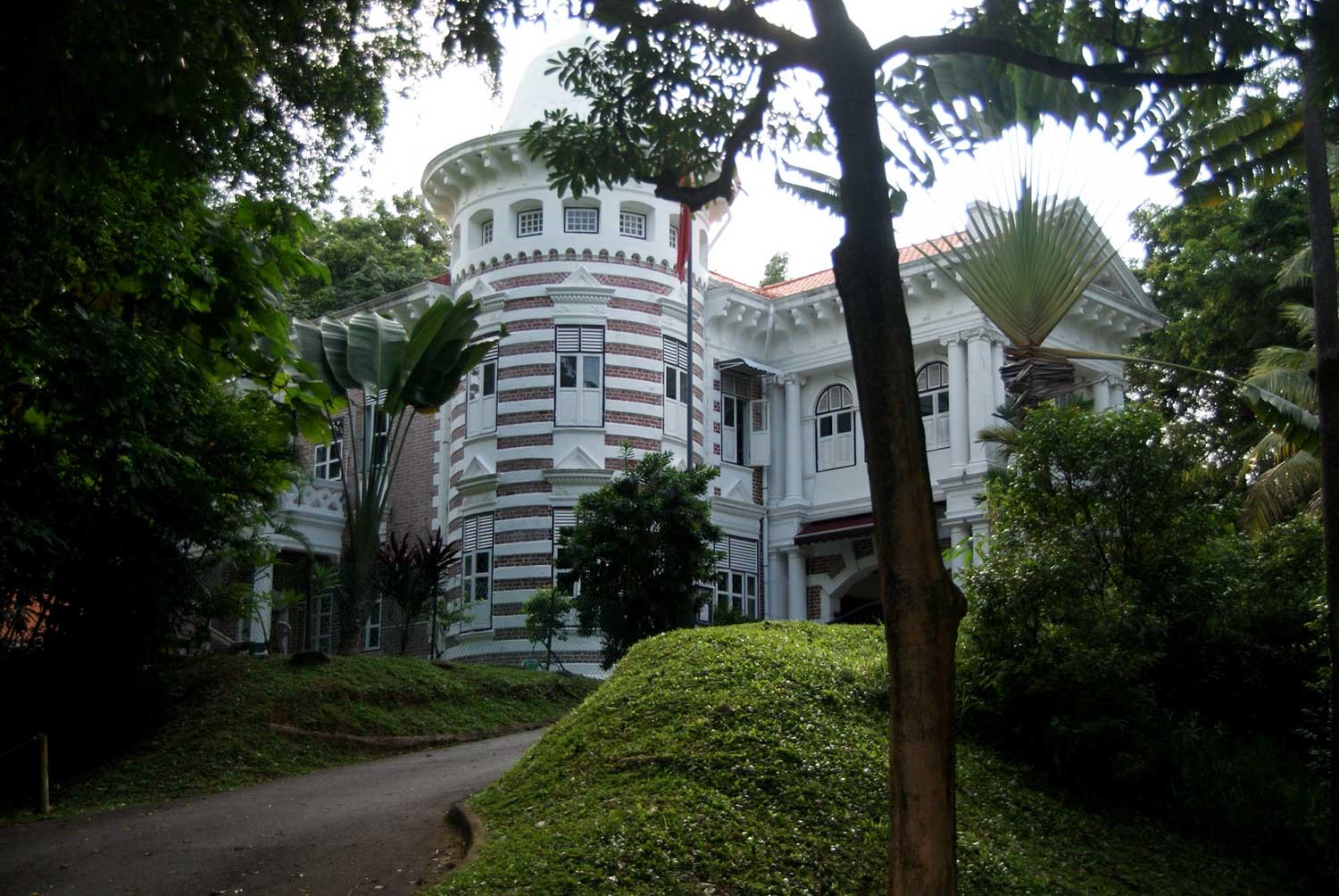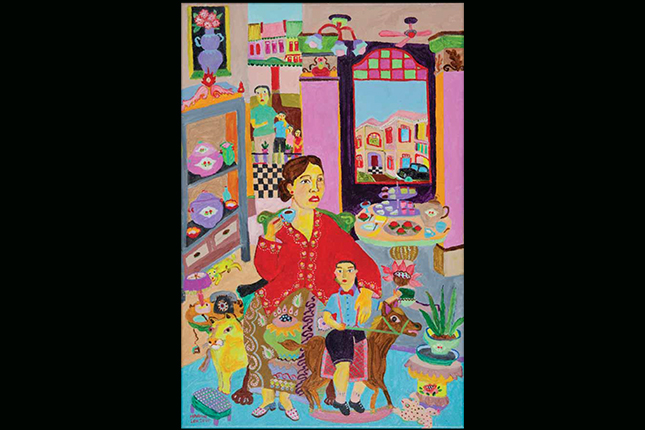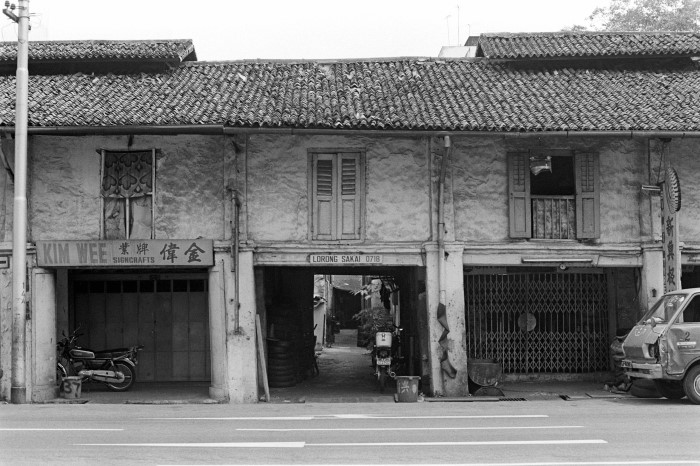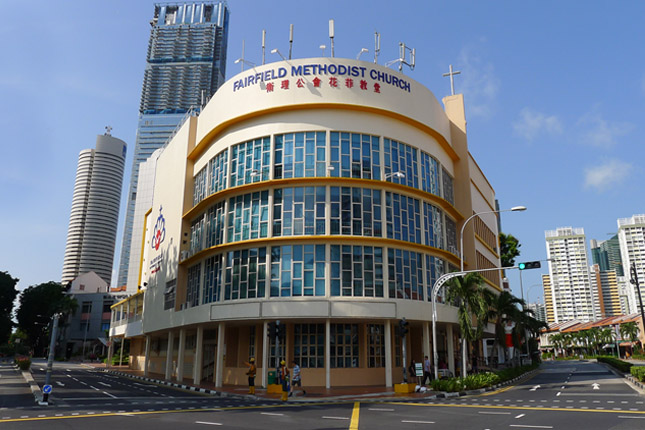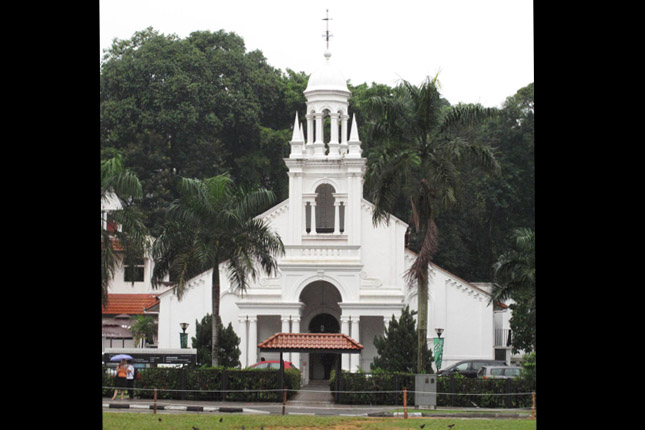Completed in 1910 by philanthropist Tan Boo Liat, great-grandson of Tan Tock Seng, the former Golden Bell Mansion was named after Tan Boo Liat’s grandfather Tan Kim Ching, whose name means golden bell.
The house was opulent for its time. It had four bedrooms, a billiard room, a smoking room, and the servant’s quarters were built at the back of the house. It once served as a private residence but now functions as a site for recreational activities and church services for the Danish families in Singapore.
The house was designed by Mok Wee Tek and is a unique example of British-influenced Singapore-style building. Its architecture reflects the Edwardian-style with a rich composition of ornamentation and craftsmanship. Unique features of the house include the star-shaped holes in the cornice, and a dome that resembles a Buddhist stupa. The dome is built over the corner bedroom and could have represented the “golden bell” of the house.
The house received famous personalities in the early 1900s and was mentioned in Song Ong Siang’s One Hundred Years’ History of the Chinese in Singapore. It was recorded that Chinese revolutionary leader Dr Sun Yat Sen, whom Tan Boo Liat was a strong supporter of, stayed at the house after his arrival from Europe on 15 December 1911. Dr Sun was on his way to Shanghai to become the Provincial President of the new Republic of China.
After the death of Tan Boo Liat in Shanghai in 1934, the house was sold. From 1985 onwards, the house was used by the Danish Seamen’s Church, which was formed in 1985 for Danish sailors passing through Singapore waters. In 2010, the church welcomed more than 1,500 members of the Danish community along with the visit by the Danish Crown Prince Frederik. The house was gazetted as part of the Southern Ridges conservation area on 9 June 2005.
The 100th anniversary of the house was celebrated in July 2011, more than 50 descendants of Tan Tock Seng visited. A plaque was also unveiled by the guest-of-honour Mr Sam Tan Ching Siong, Mayor of Central Singapore Community Development Council (CDC) then.
Buildings and sites featured on Roots.SG are part of our efforts to raise awareness of our heritage; a listing on Roots.SG does not imply any form of preservation or conservation status, unless it is mentioned in the article. The information in this article is valid as of March 2019 and is not intended to be an exhaustive history of the site/building.




